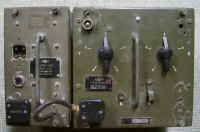
Power unit 254 & TR 3174
TGRI 5666 (battery & mains)
TGRI 5720
Power unit 254A
(for TGRI 5509)
Power unit...
(for TGRI 5666)
Aerial system 304A
Click on the photo's to enlarge!
Use browser back button to return
| Year of issue | 1941 |
| RAF designation | TGR 5508 |
| Frequency | 217 MHz, single channel |
| Main items | TR 3164 Power unit 286, 289 Aerial system 157 |
| Remarks |
Back to top of page
Back to top of page
| Year if issue | 1943 | |
| RAF designation | FGRI 5596 | |
| Frequency | Sender 196.5MHz, Receiver 193 MHz | |
| Main items | TR 3559 Power unit 254A Aerial system 350 |
|
| Remarks | Used by fighter command for approaching airplanes with A.I. who were searching for german submarines. |
Back to top of page
| Year of issue | 1943 |
| RAF designation | ARI 5648 / TGR 5671 |
| Frequency | 214-234 MHz, 5 Channels |
| Main items | TR 3593 / TR 3514 / TR 3563 Power unit 670 |
| Remarks | Build by Cossor |
Back to top of page
| Tim Bell's smart looking Mk 3B Complete in transit case. more photo's on Summer of 44 |
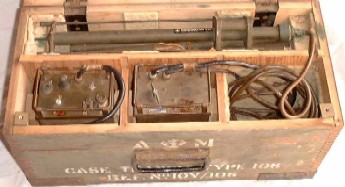 |
Back to top of page
|
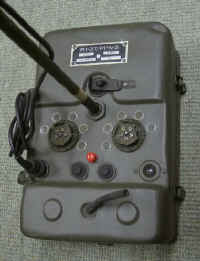
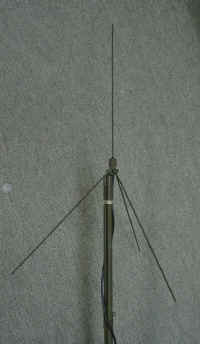 RT-37/PPN-2 AS-73/PPN-2 |
Back to top of page
| Year of issue | ||
| RAF designation | TGR 5643 | |
| Frequency | sender 213.5 MHz | |
| Main items | TR 3593 Modulator 210 Power unit type 2 |
|
| Remarks | Ultralight weight version, talking rebecca |
Back to top of page
| Year of issue | 1944 | |
| RAF designation | MGR 5591 | |
| Frequency | 214-234 MHz, 20 Channels | |
| Main items | TR 3529 / TR 3579 Receiver 188 Transmitter 45A Modulator 180 Power unit 286 Control unit 222 |
|
| Remarks | Mobile ground station fitted in vehicle, only used with Rebecca H |
Back to top of page
| Year of issue | 1944 | |
| RAF designation | ||
| Frequency | 214-234 MHz, 20 Channels | |
| Main items | ||
| Remarks | Build by Pye |
Back to top of page
| Year of issue | 1941 | |
| RAF designation | ARI 5120 | |
| Frequency | 213 MHz, 1 channel | |
| Main items | TR 3161 Rx 55, 300 Tx 43 Indicator unit 6E (or 289) Switch unit 289 (or 295) |
|
| Remarks |
Back to top of page
| RAF designation | ARI 5506, 5162, 5787 | |
| Function | The Rebecca Mk. 2 installation is fitted in aircraft as an aid to navigation. The equipment operates in conjunction with a radar ground beacon known as Eureka or BASS. By using Rebecca, the aircraft navigator can home on to the beacon and during his approach, his range from the beacon is continuously displayed. | |
| Year of issue | 1943 | 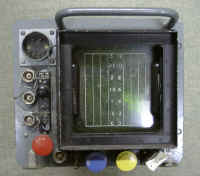 Indicator type 233 |
| Frequency range | 214 to 234 Mc/s on the following five spot frequencies when
operated in conjunction with Eureka A- 214 Mc/s B- 219 Mc/s C- 224 Mc/s D- 229 Mc/s E- 234 Mc/s 190.5 to 193 Mc/s and 214 to 234 Mc/s when operated with BABS |
|
| Pulse width | 5 microsecond | |
| Bandwidth | 3 Mc/s | |
| Power input | 80V AC supply, 1300 to 2600 c/s | |
| Power output | 300 Watts peak, for 5 micrseconds | |
| Power consumption | 225 Watts AC, 25 Watts DC | |
| Main items | Transmitter-Receiver TR 3173A (or C) Rx 61 Tx 45A Modulator 66 Power unit 286 Indicator 233 (or 6E) switch unit 115, 78A Junction box 222 Receiver Aerial 184 Transmitter Aerial 308 Aerial 165, 312 (BABS), 186 |
|
| Remarks | Build by Dynatron | |
Back to top of page
|
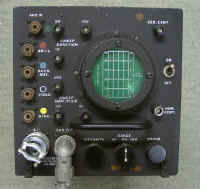 Indicator BC 929
|
Back to top of page
| Year of issue | 1944 |  Indicator type 233 |
| RAF designation | ARI 5594 | |
| Frequency | 173-176 MHz, see remarks | |
| Main items | TR 3576 Rx 159A Tx 105 Modulator 66 Power unit 286 Indicator 233, 289 Switch unit 115, 78A Control unit 222A Aerial system 308 Transmitter Aerial 342 Receiver Aerial 346 Amplifier 178 Oscillator 40 Waveform generator 40 |
|
| Remarks | Modified Mk II, used by Coastal Command, Transport Command and Fleet Air
Arm. Transmitter for 3 Eureka channels and 176 MHz ASV radarbeacon. Receiver for 177 MHz ASV radarbeacons, 173 MHz BABS radar approach beacons and two Eureka channels Build by Murphy |
|
Back to top of page
| Year of issue | 1943 |  Indicator type 233 |
| RAF designation | ARI 5642 | |
| Frequency | 214-234 MHz, 20 Channels | |
| Main items | TR 3173T / TR 3610 Modulator 198, 211 Power unit 648 Indicator 96 (or 233) Switch unit 78A, 115 Amplifier A3611 |
|
| Remarks | Talking Rebecca, for use with Eureka Mk II T | |
Back to top of page
|
 TR 3182 |
Back to top of page
| RAF designation | ARI 5610 |
| Function | Rebecca Mk. 4 installation is a lightweight miniature
airborne interrogator operating over the frequency band 174 to 240 Mc/s.
it is a general purpose equipment designed to replace all existing marks
of Rebecca and Lucero in service and provides the following facilities
|
| Year of issue | 1946 |
| Frequency | 170-240 MHz, 30 Channels |
| Main items | TR 3624 Rx 211, 6449 Tx 127 Indicator 208 Switch unit 273 control unit 526 Receiver Aerial 184 Transmitter Aerial 308 |
| Remarks | Build by EMI |
Back to top of page
| Year of issue | 1944 | 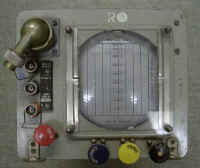 Indicator unit type 6A |
| RAF designation | ARI 5543 | |
| Frequency | 214-234 MHz, 30 Channels | |
| Main items | TR 3590 / TR 3577 Rx 61A Tx 45A Modulator 179 Power unit 286 Indicator 6A switch unit 115, 78A Control unit 222A Aerial 312, 345 |
|
| Remarks | Special version which needed 2 Eureka beacons, used for photo
reconnaissance. Usual combined with Gee "H" |
|
Back to top of page
| Year if issue | ||
| RAF designation | FGRI 5115 or 5116 | |
| Frequency | ||
| Main items | ||
| Remarks | BA & ASV |
Back to top of page
| Function |
A responder beacon providing beam approach facilities in conditions of poor visibility for aircraft fitted with a suitable interrogating device such as Lucero or Rebecca |
| Frequency Range |
Predetermined spot frequencies within the range 214 to 234 Mc/s T and R 5 Mc/s apart |
| Performance |
Range with aircraft flying at l.000 ft.-14 to 20 miles. Both mobile and fixed versions available. The system can respond to approx. 30 aircraft at one time |
| Pulse |
Normal-5uS (dots) and l2,5uS (dashes) |
| Equipment |
TR-3567 or TR-3567A |
| P.R.F |
Beam switching alternately every 1/15th second |
| Selectivity |
+/- 2 Mc/s = 6dB down |
| Sensitivity | Receiver: Input of 100 microvolts = twice noise |
| Aerial system | Aerial system Type 349. A rectangular slotted cavity resonator mounted symmetrically in a corner reflector |
| Output | Transmitter radiated power: 15 watts peak |
| Power Supplies | 12 volts, 5 amp. 12 volt accumulator float-charged by small petrol-electric set |
| Test equipment |
WavemeterTypeW-1649 |
| Vehicles and associated equipment | 12 cwt. Standard D.R.L.S. van, vehicle, Type 441; monitor aerial |
|
|
|
| Year if issue | ||
| RAF designation | FGRI 5798 | |
| Frequency | ||
| Main items | ||
| Remarks |
Back to top of page
| Year if issue | ||
| RAF designation | FGRI 5725 | |
| Frequency | ||
| Main items | ||
| Remarks |
Back to top of page
| Year if issue | ||
| RAF designation | MGRI 5797 | |
| Frequency | ||
| Main items | ||
| Remarks |
Back to top of page
| Year if issue | ||
| RAF designation | FGRI 5755 | |
| Frequency | ||
| Main items | ||
| Remarks |
Back to top of page
| Year if issue | ||
| RAF designation | MGRI 5756 | |
| Frequency | ||
| Main items | ||
| Remarks |
Back to top of page
| Year if issue | ||
| RAF designation | FGRI 23014 (5926 = 400Mc/s) | |
| Frequency | ||
| Main items | ||
| Remarks |
Back to top of page
| Year if issue | ||
| RAF designation | ARI 5385 | |
| Frequency | ||
| Main items | ||
| Remarks |
Back to top of page
BABS test equipment
| TS 333 | |
| Trainer | TS 88 |
| TS 335 |
| RAF designation | ARI 5645 | ||||||||||||||||
| Function | Lucero is a homing, beam approach and IFF interrogator for use with H2S, ASV and AI. It uses the IF amplification stages of the equipment with which it is used and also the display appears on the CRT of the parent equipment. Due to this inter-connection and also to the fact that different marks of the equipment to be interrogated have different carrier frequencies, several variations of Lucero have been produced. The TR 3566A. which here is briefly described, is the Bomber and Coastal Command version, the same basic set being used by both commands. Push-button frequency selector is used by Bomber Command. while Coastal use a functional selector switch. | ||||||||||||||||
| Year of issue | 1944 | ||||||||||||||||
| Type of wave | Pulse modulated | ||||||||||||||||
| Pulse width | 5 microseconds | ||||||||||||||||
| Pulse recurrence frequency | 217 c/s | ||||||||||||||||
| Frequency range |
|
||||||||||||||||
| Main items | Transmitter Receiver TR 3566 Power unit 532 Receiving unit 161 Switch unit type 115 transmitter unit type 105 Waveform generator type 3C Control unit type 222A |
||||||||||||||||
| Remarks | Used by Bomber Command and Fleet Air Arm. Developed for 1.7 meter beacons by 9 and 3 cm radar (H2S and ASV Mk VI) some versions switchable to two Eureka channels. |
Back to top of page
Reference:
"Radar Development to 1945" E.K.Williams, published by P.Peregrinus
Air Publications & Manuals.